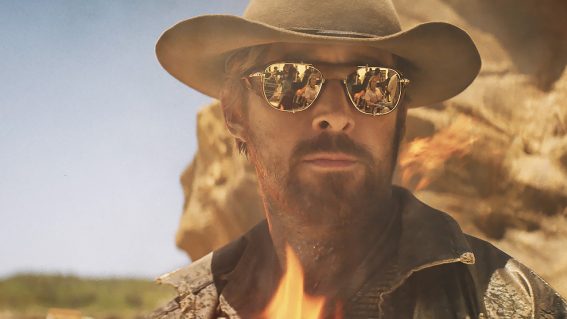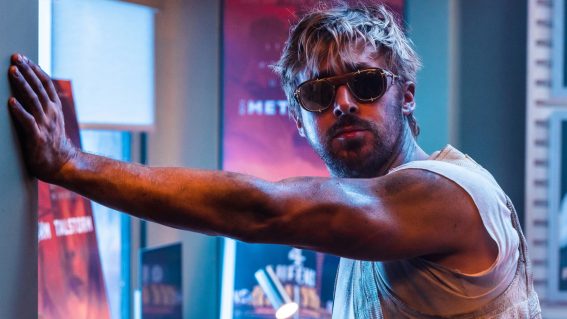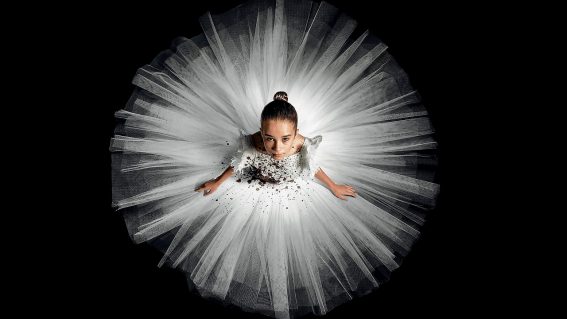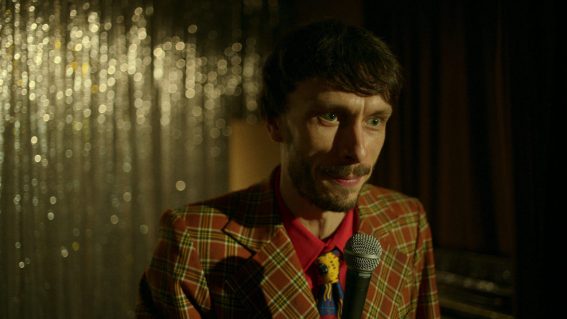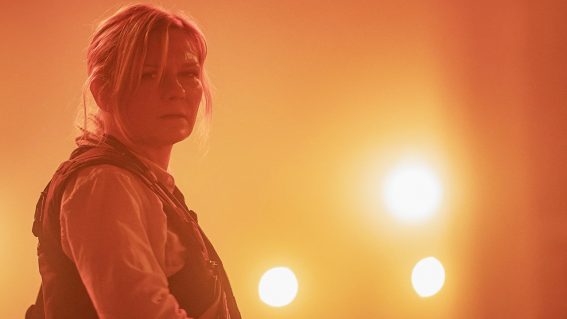Winnie the Pooh’s reinvention as a cannibalistic serial killer is a beautiful thing
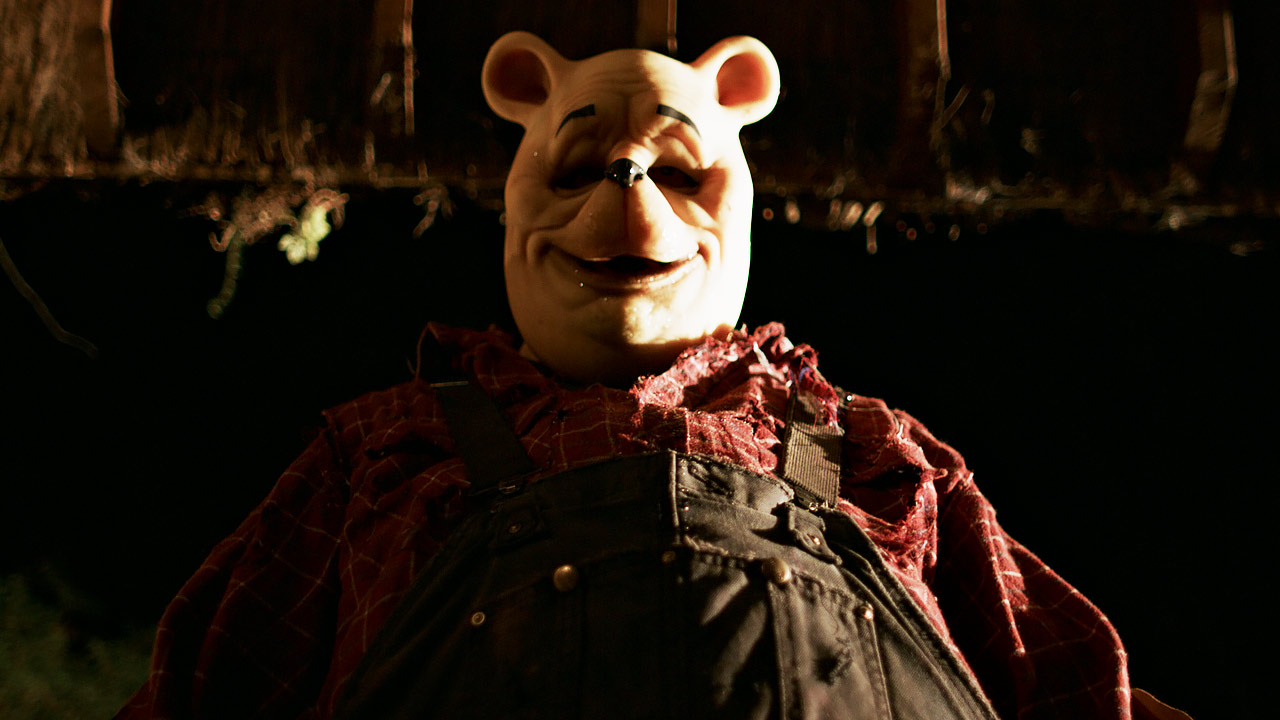
Be prepared to have your childhood memories doused in blood. Winnie the Pooh is the star of a taut new slasher film that, while it isn’t going to win any Oscars, serves an important purpose, writes Luke Buckmaster.
Another year, another low-rent slasher recasting Winnie the Pooh as a cannibalistic killer whose fondness for honey has been eclipsed by a newfound taste for blood. Writer/director Rhys Frake-Waterfield has hit the sweet spot for déclassé genre flicks: nobody expects his brand-hijacking film to be any good, and trashy in some ways makes it better—at least more palatable for the late night grindhouse crowd. Winnie the Pooh: Blood and Honey became possible when A.A. Milne’s first Pooh book (published in 1926) entered the public domain in 2022, freeing up a long-copyrighted work for all and sundry.
From a financial perspective jumping on the rights was a devilishly smart move, with some reportage predicting generous dividends. That coyness extends to the film itself, which is an exercise not just in being aware of—and setting—limitations, but configuring narrative justifications to help sustain a workably intense (albeit schlocky) atmosphere.
In the prologue, for instance, we learn that Pooh and his pals—devastated that Christopher Robin abandoned them—not only renounced their quasi-humanity but vowed never to speak again. This removes the need to give the antagonists dialogue and a voice, which would almost certainly have sounded stupid and distracted from the main attraction: the grisly killing of a group of university students holidaying at Hundred Acre Wood. There’s Maria (Maria Taylor), Jess (Natasha Rose Mills), Alice (Amber Doig-Thorne), Zoe (Danielle Ronald), Lara (Natasha Tosini) and Tina (May Kelly) , the latter getting lost en route and never making it—mauled by Pooh then shoved into a woodchipper. Blood and Honey is a lean film, taut and trim, visually algorithmic but engineered with just enough sizzle to satisfy its unfussy target audience.
The presence of the now Leatherface-esque Pooh and Piglet was obviously achieved by having two people walking around in masks: a decision Frake-Waterfield probably considered the least-worst solution. But it doesn’t make the film less scary. Horror has a long history of exploiting masks, which are sometimes used to conceal a killer’s identity but are more interesting as forms of identification themselves, steeped in many traditions—from shamanistic imagery to ritualistic transformation and various kinds of performance-enablement. Here the villains loom like silent apparitions, playing into the idea that they’re funhouse mirror distortions of childish fantasies, dragged from juvenility into adulthood’s cold daylight.
Introductory moments are presented in child-like illustration, accompanied by a clean-voiced narrator explaining how the gang used to hang out, having a dandy old time in the woods, before Robin up and left them. This set off a dramatic chain of events, culminating in his old friends being alone, starving and forlorn. The group’s honey-licking leader made a tough call: in order to survive, they had to eat one of their own—so Eeyore got the chop. We can be grateful we didn’t see old donkey breath rotating on a spit, still alive, intoning in his signature depressing monotone: “oh well, at least I didn’t end up as the entrée…”

The film’s heart and soul lies in its next sequence, which fast forwards to show a much older Christopher Robin (Nikolai Leon) taking his fiancée Mary (Paula Coiz) to an old hangout spot in the Hundred Acre Wood—now creaky and decrepit, blood smeared on the side of a honey jar. The visit doesn’t end well, with Mary being minced and Robin pleading to be spared by his former besties (“we used to play together as friends!” he wails).
Frake-Waterfield taps into two powerful themes. The first involves the surrendering of formative experiences in the journey to come of age—reframed, like in Puff the Magic Dragon and the Toy Story movies, as an exercise in fantastical empathy, the storyteller imagining the emotional state not of the person moving on but childhood elements left behind. The other waxes on how time ushers in irrevocable change, entropying and souring once beautiful things. This is common in films and appears all around us in reality—from wilted leaves to dead insects, dried up ponds, broken toys, ruined dreams. I described the aforementioned scene as the film’s heart and soul partly because of the cruel literalisation that follows: Blood and Honey really is about mute murderous beasts, freed from the shackles of their G-rated past.
Atmospherically, Blood and Honey is good enough to feel like a decently produced genre outing, steeped in visual conventions but with a genuine sense of the foreboding—which is never easy to pull off, no matter the budget. The plot—essentially just a series of Pooh and Piglet-speared violent incidents—is so mechanical it barely has time for any human messages, which is why, at this late point in the review, I’ve barely mentioned most of the human characters. I struggle to recall a single feature distinguishing them. The director doesn’t care, and neither do we: they’re the equivalent of wooden pieces cut and shaped by the carpenter.
But the characters’ deaths are not in vain, being sucked into an experience that—belying the film’s schlocky impulses—imparts an important message that no artistic phenomena, no matter how beloved or iconic, should have its trajectory stage-managed and fixed in stone. Pooh’s new role as a monstrous killer is a beautiful thing, reminding us that pop culture’s infinite cycle is—and must be—more powerful than any single capitalistic endeavour. So suck eggs, Disney: Pooh’s honey jar doesn’t belong to you. His grotesque reinvention is a kind of cosmic counter-balance: the yin of merchandise-friendly family products; the yang of a gnarly midnight movie.




